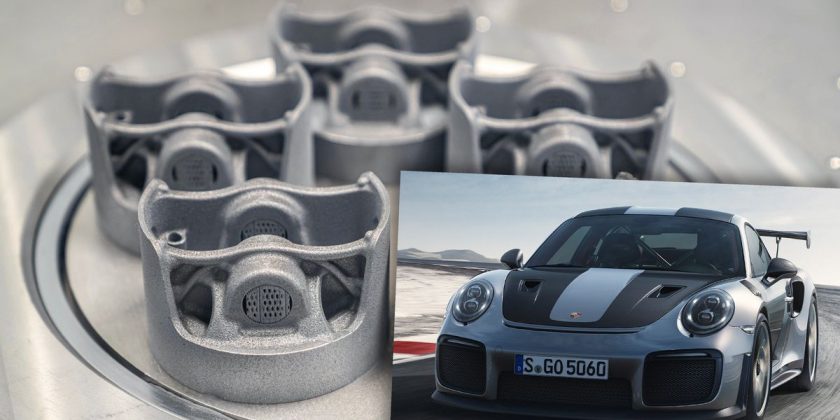
Porsche has revealed how it used 3D printing to unlock level 99 of sports car manufacture, gaining access to small but significant power boosts that had until recently been limited to the money-no-object inhabitants of the hypercar village.
The Stuttgart speed merchants explained that the current 911 GT2 RS couldn’t have safely achieved its 700 metric horses without the use of 3D printing, specifically to manufacture its unique pistons. Some 30 among its equine horde were only freed thanks to a specific design that’s impossible to produce with conventional methods.

Porsche says using a laser metal fusion process, where a laser beam melts the surface of high-purity metal powder to fuse it to the layer beneath, allowed them to make pistons that weigh 10 per cent less than forged equivalents. That equates to a pretty huge reduction in inertia at the GT2’s redline.
There’s also an “integrated and closed” cooling duct in the piston crown that simply can’t be produced the old-fashioned way. Together with the weight saving, Porsche is left with an engine that can hit bigger tacho numbers with better reliability, not to mention greater fuel efficiency. Porsche worked with Mahle and laser experts Trumpf to make it happen.

Pistons aren’t the only thing Porsche is 3D printing. Since May you’ve been able to order (online, presumably) a partly 3D-printed full bucket seat for the 911 and 718 series. The cushions and backrest surfaces are produced in this way because it’s super precise and yet easier than developing a whole new set of tools for the job.
On top of that, the brand’s 3D printers are kept busy with orders for reproduction parts for back-catalogue classics whose spares are no longer available. Need a new clutch lever for your 959? Don’t we all, and fortunately Porsche can now 3D-print you one. The company expects to expand its efforts on this front, leading to innovative details on low-volume special editions.
Source: Read Full Article
